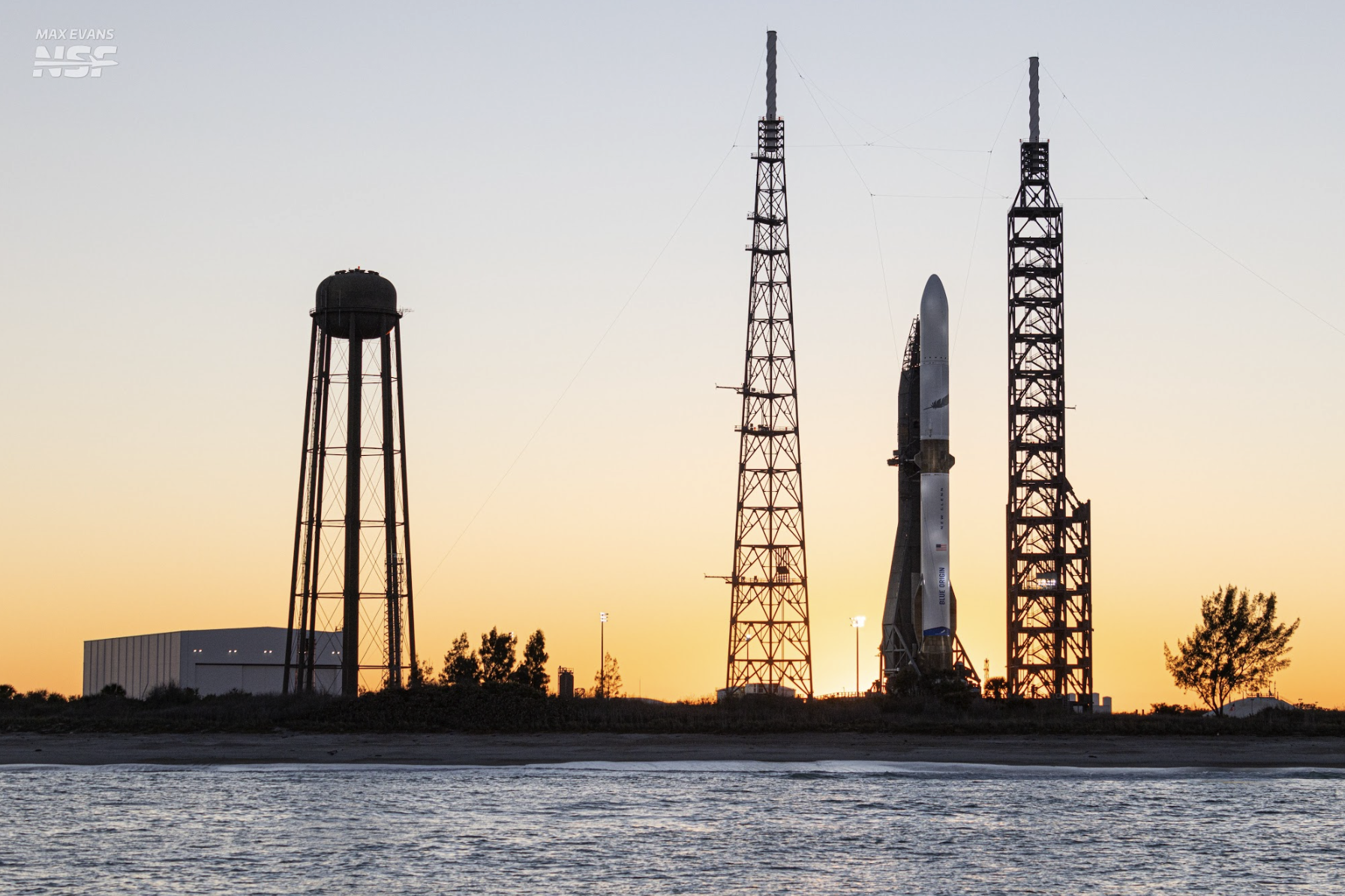Now Reading: Blue Origin Advances Toward New Glenn Rocket Launch with Successful Hot Fire Test
-
01
Blue Origin Advances Toward New Glenn Rocket Launch with Successful Hot Fire Test
Blue Origin Advances Toward New Glenn Rocket Launch with Successful Hot Fire Test


Blue Origin is inching closer to its highly anticipated debut launch of the New Glenn rocket, a vehicle designed for heavy-lift missions to geostationary orbit and beyond. This month marks a significant milestone as the company gears up for a hot fire test, which is pivotal in validating the rocket’s systems before it takes to the skies. At a towering height of 98 meters and a width of 7 meters, New Glenn is a remarkable engineering achievement.
The pivotal hot fire test took place on the launch mount at Launch Complex 36 (LC-36). This site, located in Cape Canaveral, has seen significant activity recently, including the arrival of the second stage, known as Glenn Stage 2 (GS2). After being transported from Blue Origin’s factory, GS2 underwent various tests, culminating in a successful hot fire test. This test showcased the twin BE-3U engines, which fired for a full 15 seconds, marking the first time any New Glenn stage has ignited its engines. One of the most impressive aspects of this test was the specially designed mobile test stand that Blue Origin constructed for GS2, allowing the testing to occur directly on the launch pad rather than a separate facility.
This innovative approach not only streamlines the testing process but also demonstrates Blue Origin’s commitment to maximizing efficiency in its operations. The mobile test stand, resembling a smaller version of the Transporter Erector (TE), was equipped with cutouts to accommodate the BE-3U engines, facilitating their ignition without the vacuum nozzle extensions.
Post-hot fire, GS2 was transported back to the hangar for finishing touches, including the installation of vacuum nozzle extensions, essential for its mission-critical performance in space. Meanwhile, the first stage, or Glenn Stage 1 (GS1), affectionately named “So You’re Telling Me There’s A Chance,” arrived at LC-36 in late October and was integrated with GS2. This integration process especially important as it prepares the stages for a seamless launch operation.
As part of the integration, the nearly 22-meter-tall payload fairing was added to the rocket. Although the fairing currently attached will not be used for the inaugural flight, Blue Origin has shared excitement about its Blue Ring Pathfinder payload, which is ready for launch and will be integrated with New Glenn after the hot fire tests.
On December 4, the rocket underwent initial propellant loading tests, showcasing the dynamic preparations taking place at LC-36. Observers noted venting from around the second stage, signaling that the team was cautiously advancing towards a complete wet dress rehearsal, which would lead to a full hot fire test of GS1’s BE-4 engines.
Blue Origin’s CEO, Dave Limp, recently posted on social media about the successful fueling of GS1 with liquid natural gas (LNG) and liquid oxygen (LOX) for the first time. This marks a critical step forward as the company awaits necessary regulatory approvals for both the hot fire and subsequent launch operations. The anticipation surrounding these developments is palpable, as many in the industry are eager to witness the first flight of this ambitious heavy-lift rocket.
Once the hot fire test is completed satisfactorily, Blue Origin will shift its focus to the launch campaign, which includes securing final regulatory approvals, particularly from the FAA. Concurrently, Blue Origin has been enhancing its manufacturing capabilities at its Exploration Park campus. One of the key developments is the ongoing construction of the Lunar Plant 1 building, designated for the assembly of the Blue Moon lunar landers, designed to support NASA’s Artemis program and beyond.
Adjacent to the Lunar Plant 1, Blue Origin is also working on a new storage facility following damage from Hurricane Milton, as well as foundations for a new Chemical Processing Facility, indicating the company’s commitment to expanding its operational footprint.
The recent announcement of a multi-launch agreement with AST SpaceMobile underscores New Glenn’s capabilities. The rocket’s design allows for substantial payloads, accommodating up to eight satellites within its diameter during launches scheduled for 2025 and 2026. This partnership highlights New Glenn’s role in advancing communications technology and affirms Blue Origin’s growing influence in the aerospace sector.
The road to the inaugural launch of New Glenn is paved with meticulous planning, innovative engineering, and a commitment to safety and efficiency. As Blue Origin continues its preparations, the aerospace community watches eagerly, intrigued by the promise that New Glenn holds for the future of space exploration.
Stay Informed With the Latest & Most Important News
Previous Post
Next Post
-
 01From Polymerization-Enabled Folding and Assembly to Chemical Evolution: Key Processes for Emergence of Functional Polymers in the Origin of Life
01From Polymerization-Enabled Folding and Assembly to Chemical Evolution: Key Processes for Emergence of Functional Polymers in the Origin of Life -
 02Panasonic Leica Summilux DG 15mm f/1.7 ASPH review
02Panasonic Leica Summilux DG 15mm f/1.7 ASPH review -
 03Two Black Holes Observed Circling Each Other for the First Time
03Two Black Holes Observed Circling Each Other for the First Time -
 04How New NASA, India Earth Satellite NISAR Will See Earth
04How New NASA, India Earth Satellite NISAR Will See Earth -
 05And Thus Begins A New Year For Life On Earth
05And Thus Begins A New Year For Life On Earth -
 06Astronomy Activation Ambassadors: A New Era
06Astronomy Activation Ambassadors: A New Era -
07SpaceX launch surge helps set new global launch record in 2024




















